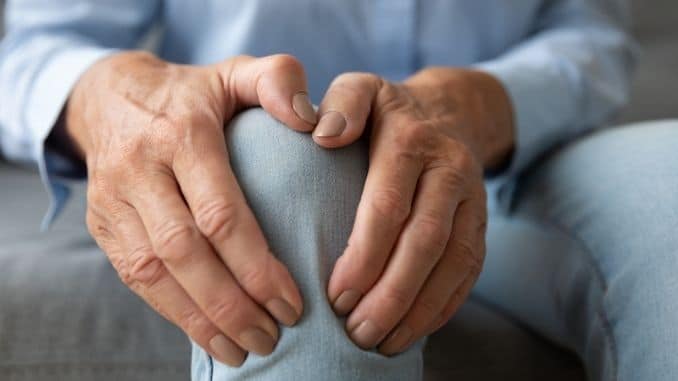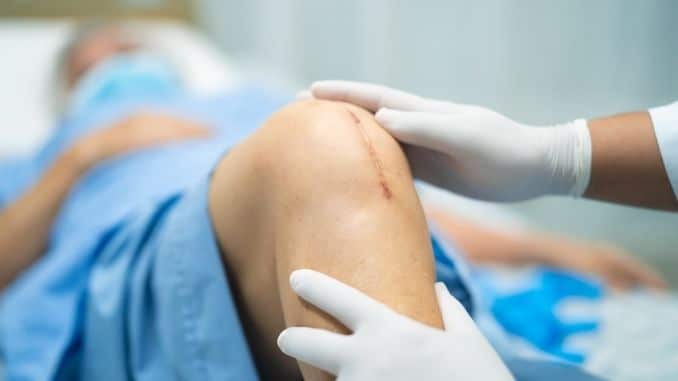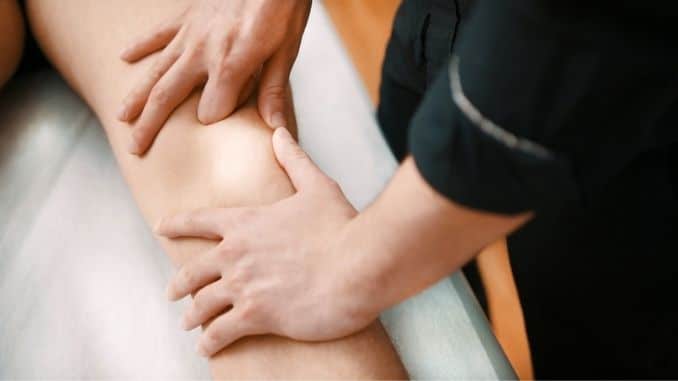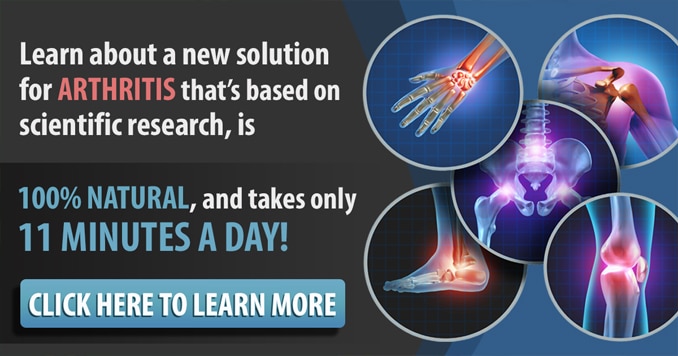
Stage 4 osteoarthritis (OA) is considered “severe.” People in Stage 4 OA of the knee experience great pain and discomfort when they walk or move the joint because the joint space between bones is dramatically reduced.
The cartilage is almost completely gone, leaving the joint stiff and possibly immobile. The synovial fluid is decreased dramatically, and it no longer helps reduce the friction across the moving parts of a joint.
After consulting with your primary care doctor, your diagnosis may not be clear-cut or your situation may be complicated. If so, it may be wise to see a rheumatologist.
A rheumatologist is a physician who specializes in the diagnosis and treatment of rheumatic diseases, a group of disorders characterized by chronic, often intermittent pain affecting the joints or connective tissues. Rheumatologists have additional education and training, making them a better choice for complicated cases. As the patient, you may want to see a rheumatologist if:
- Your pain is unrelenting.
- Your symptoms are persistent or worsening despite treatment.
- Your doctor is unable to diagnose the underlying cause of your pain.
- Your symptoms are flaring more frequently or more severely.
- You are less able to handle tasks you used to be able to manage.
- You are becoming increasingly homebound.
- Your condition is lowering your quality of life.

Treatment Options for Stage 4 Knee Osteoarthritis:
1. Mesenchymal Stem Cells or MSCs
This is the newest technology in the treatment of osteoarthritis. Your bone marrow makes these types of cells. They can grow into new tissues, including cartilage. By gathering these cells and injecting them into the knee joint, the hope is that they will create new cartilage and reduce inflammation.
It’s a hot area with clinical trials still being conducted, but most studies are still in the early stages. As such, the success rate of treatment is yet to be determined.
2. Bone Realignment Surgery or Osteotomy
This is one treatment options for people with stage 4 severe osteoarthritis of the knee. During this surgery, a surgeon cuts the bone above or below the knee to shorten it, lengthen it, or change its alignment.
This surgery shifts the weight of your body away from the points of the bone where the greatest bone spur growth and bone damage has occurred. However, this surgery is more often done in younger patients.
3. Total Knee Replacement or Arthoplasty
This is the last resort for most patients with severe OA of the knee. During this procedure, a surgeon removes the damaged joint and replaces it with a plastic and metal device.
Side effects of this surgery include infections at the incision site and blood clots. Recovery from this procedure takes several weeks or even months and requires extensive physical and occupational therapy.

4. Bone Marrow Aspirate Concentrate
This procedure draws on the same concept as MSCs. Experts take cells from your body and use them to stimulate the healing process inside your knee.
The advantage of this procedure is that bone marrow may be easier to obtain than MSCs, and also contains other substances involved in promoting cartilage regrowth and calming inflammation.
While it’s still a new approach, a number of studies have found “good to excellent overall outcomes”. The downside is that some trials were tougher than others, so they recommended that the treatment be used cautiously, given so much is still unknown.
It is up to your discretion, however, if you wanted to try this kind of treatment. It is expensive but may be worth trying.
5. Botox Injections
This is also one of the treatment options for stage 4 knee osteoarthritis. Botulinum is a toxin made by the bacterium, Clostridium botulinum. Because it can shut down nerve cells, doctors can use it to ease muscle spasms. This may help with the pain that you may be experiencing, which your PT may have suspected as sciatica.
Please note that an MRI has no capability of detecting nerve involvement. However, there is a new technology out there that does have the ability to image nerves, called Magnetic Resonance Neurography (MRN).
Some doctors are trying botulinum to help treat joint pain. The theory is that it might permanently deaden nerves and offer relief without affecting the knee’s structure.
Osteoarthritis is a degenerative condition. It is progressive and not reversible. Band exercises will help in terms of strengthening the structures surrounding your knee, but this will not stop osteoarthritis. The symptoms can be effectively managed or delayed with exercises, but this will not stop the condition per se. This is why knee surgery is often recommended when all other treatments have been exhausted.
6. Swimming or Water Aerobics
Swimming or water aerobics can be an effective way to manage arthritis pain while helping to build muscle strength and maintain mobility. Water exercises are helpful due to:
- Buoyancy: Buoyancy counteracts gravity, thereby decreasing the weight placed on painful joints and the spine. In fact, when immersed to neck level, buoyancy supports 90 percent of the body’s weight, and in waist-depth water, buoyancy can support 50 percent of your body weight. One of the many advantages of exercising in water is that diminished weight-bearing stress helps aide in strengthening weak muscles and improving balance and confidence.
- Resistance: Water can provide up to 15x more resistance than air. It provides a very safe, accommodating resistance, which means that the harder you push against the water, the more resistance you will get. This drug resistance can help build muscle strength and endurance throughout your body.
- Temperature: Everybody knows how great it feels to soak in a warm, soothing bath. For someone who suffers from chronic pain, warm water is the best place to exercise. Colder water tends to cause muscles to tense up. Experts believe that if people with arthritis spent more time in warm water, they’d be able to move better with less pain.

Exercise truly can help manage arthritic pain. You may find this article beneficial as it discusses how exercise can help with arthritic pain.
Arthritis in general is marked by inflammation in the joints that causes stiffness and pain. So, it also helps to look at different ways to reduce inflammation in the body:
Additional Tips for Relieving OA Knee Pain:
- Listen to your body and adjust your activities as necessary.
- Stick with gentle exercises that strengthen the muscles around your knees.
- If you feel increased pain, stop and rest. If joint pain continues hours after you’ve stopped, you are overexerting your knee.
- Increase your activity level throughout the day by walking whenever possible.
- Use over-the-counter anti-inflammatory medications for your knee pain.
- Make sure you get a good night’s sleep.
- Manage your weight: Extra pounds can be a burden on your knee.
- Check with your doctor if you think it may be necessary to use a cane.

Remember that not everyone will respond to the different treatments available in the same way, so it is important to find the option that works best to help manage your pain and discomfort. Work with your doctor to see what choices might be most effective for your specific condition, and consult with a rheumatologist if needed.
Get pain-free and enjoy life to its fullest by managing your Arthritis. Check out our Arthritis handbook here.

